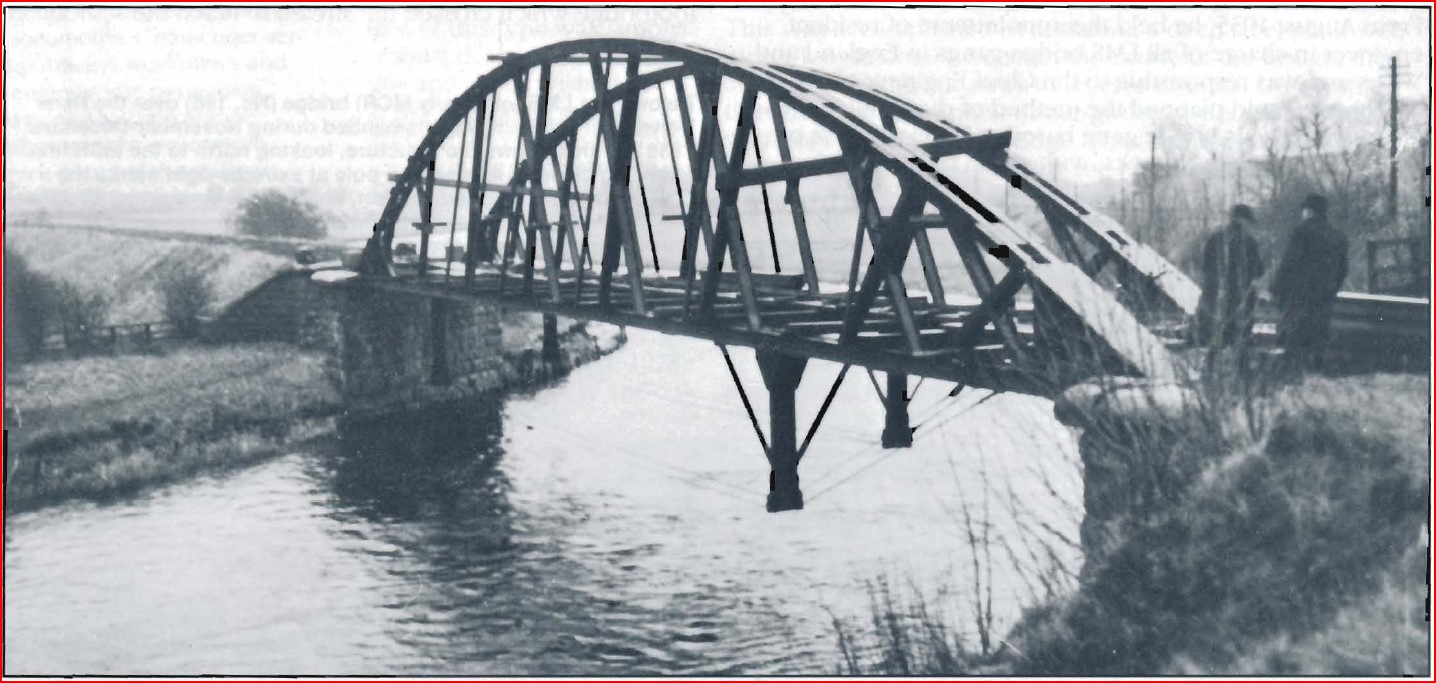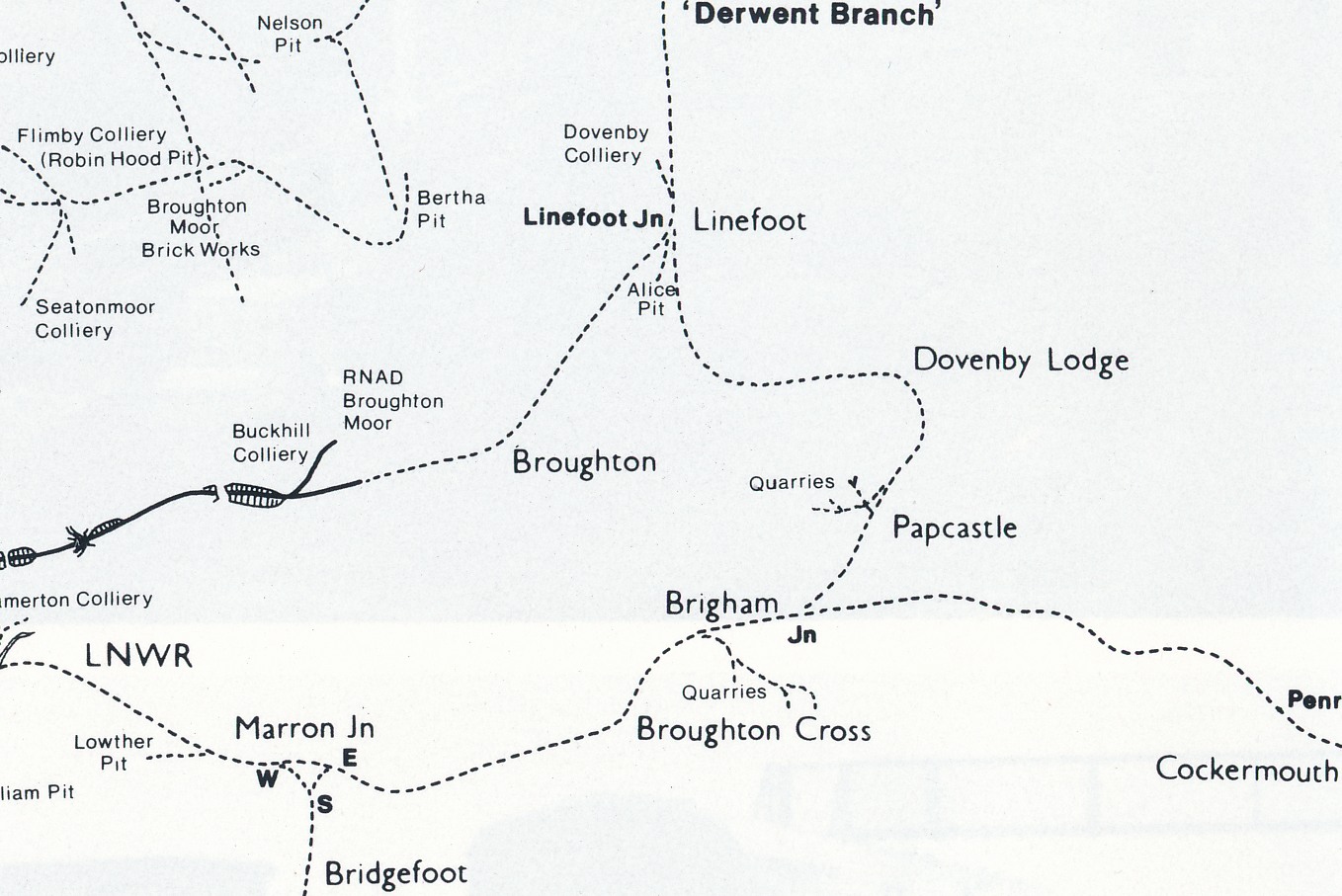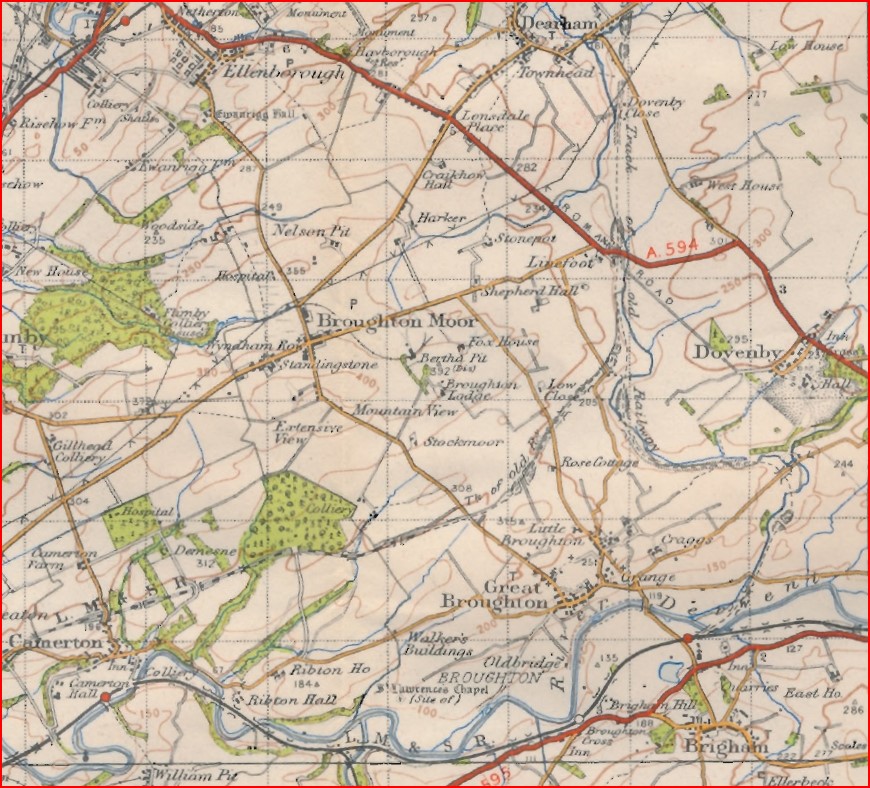Railway Tragedy at Brigham Bridge
The tragedy at Brigham, December 16 1936
The cross-Lakeland line between Penrith and Workington, via Keswick and Cockermouth, was a beautiful railway of much character and appeal. Slightly less than 40 miles in length, this railway passed through spectacular scenery and featured fierce gradients and many bridges. The attractive stations, yards and halts served their communities and industries well fine examples of the country railway at its best. The line began life in the west between Workington and Cockermouth in 1847, and the route to Penrith was completed in 1864/5. Through services operated for 101 years, until closure of the Keswick-Workington section in April 1966. This left a truncated passenger service between Penrith and Keswick, which survived until 1972.
This railway and its track bed was abandoned but is now re-purposed for the A66 trunk road – and parts restored for walking and cycle tracks in Cockermouth and between Keswick and Threlkeld.
Bowstring girder bridges of the Cockermouth Keswick Penrith Railway (CKPR) were left standing after the closure of the line and you will see them on the Keswick to Threlkeld footpath.
An upright bowstring girder structure, in wrought iron, crossing the river Derwent diagonally and carrying the single track of the Maryport &Carlisle Railway (M&CR) Derwent branch, from Bullgill to Dearham, Dovenby, Papcastle and Brigham, opened in 1867. Maryport and Carlisle trains thus could connect at Brigham to the Cockermouth and Keswick and Penrith line.
The span of 130ft across the Derwent at Brigham was greater than any other bowstring girder bridges in the area. The branch line closed on 29 April 1935 and the demolition of the bridge at Brigham was scheduled towards the end of 1936.
The civil engineer in charge of the work was Richard Gauld, 40 years of age and highly regarded for his varied practical experience and professional knowledge. He was noted for his judgment and care, especially his concern for men working with him. Mr Gauld had for several years been the LMS resident engineer, bridge gangs, in the northern division, based at the divisional headquarters, Hunt’s Bank, Manchester; there were four gangs in the division. From August 1935, he held the appointment of resident engineer in charge of all LMS bridge gangs in England and Wales and was responsible to the Chief Engineer of the LMS Richard Gauld planned the method of dismantlement and entrusted it to his bridge gang based at Barrow. Work proceeded for some five weeks, with seven or eight men employed.
On Wednesday December 16 1936, the job was approaching a critical stage and Mr Gauld travelled from his home in Cheshire to take charge, arriving on site at 11.00 am. The prevailing weather was typical of December in Cumberland, with the Derwent in spate and swift-flOWing, but wind conditions did not call for postponement of the work. The deck of the bridge had been dismantled and steel cables had been secured and stretched across the river immediately beneath the bridge. This was in order to provide tension members when the oxy-acetylene cutting down of the bowstring side girders eliminated its upper curved boom (normally the compression member of the bridge) and converted the horizontal booms to compression members.
While the cutting operation was under way, there was suddenly a jerk, when the crucial reversal of stress probably occurred (as visualised in advance) but the cables failed to play their part; one parted, and four men were hurled into the surging river below, clinging to scaffold planks. They were: Richard Gauld, the engineer in charge; Alexander (‘Sandy’) Riddett, foreman of the Barrow bridge gang; Robert Mitchell, charge hand plater and second man of the gang, and workman T. Davies. The alarm was conveyed by railway telephones from Brigham, westward to stations and signal boxes on the Workington line, which crossed and recrossed the Derwent in the next few miles. All within range of the emergency caIls rushed to access points on the riverbanks, while at Camerton a barrier of wires and ropes was rigged across the river, secured to the structure of the footbridge which crossed the stream to reach the station.
Davies was soon swirled into flooded fields on the left bank and was saved, although unconscious, by A. Birkett, Stationmaster at Broughton Cross. Robert Mitchell, a young man, succeeded in steering his plank towards the same bank and was successfully grabbed by Porter Weightman, also of Broughton Cross. Mitchell had been carried by the current, estimated at 15mph, close to Richard Gauld and almost propelled the latter’s plank into arresting bushes on the bank. He thought he had achieved this but unhappily the engineer was carried on. Both Gauld and Ridden were seen, still clinging to their planks, further downstream but the water was bitterly cold and both lost their lives.
A squall of wind may have contributed to the collapse but the occurrence and its fatal outcome pointed , with hindsight, to the wisdom of a different or modified technique or equipment. More to the point, the job should perhaps have been postponed until a more favourable time of year. At least one friend and colleague of Richard Gauld held that the underlying cause was prevailing pressure on him to complete a heavy programme of work, of which this task was just one part, if a hazardous one. Another life could have been 10 t, but Mr Gauld had earlier noticed that his Inspector, Robe rt Hogg, was ill and had sent him home. Robert Mitchell re ported that the engineer’s last words, in the rushing stream, were of concern for Ridden, the Barrow Foreman.
Subsequently, 22 colleagues contributed to a book entitled ‘Richard Douglas Gauld, Civil Engineer: In Memoriam.’, in tribute to his kindness to his staff and friends. He was well known on the CKPR line and often motored out from Disley to be on site cheerfully through a wet Lakeland Sunday, to see a bridge job through to completion.
On a lighter note , he was the engineer who , in charge of the reconstruction of bridge No. 60 over Penrith Road , Keswick, in 1933, had problems because the steam crane was necessarily on the Penrith side of the bridge when its wate r ran low. It could not cross the gap to reach the water column – the ‘elephant’ – at Keswick station, so he organised the spectators into a human chain, from river to crane , passing buckets of water from one to another. Readers may recall a similar occurrence in the 1950s Ealing Comedy, The Titfield Thunderbolt.! It perhaps illustrates the point that there can be a prototype for most things in the railway film and model world !
Ref: Rails Through Lakeland. An illustrated History of the Workington – Cockermouth – Keswick – Penrith Railway 1847 – 1972 by Harold D. Bowtell. Published by Silver Link Publishing page 142





